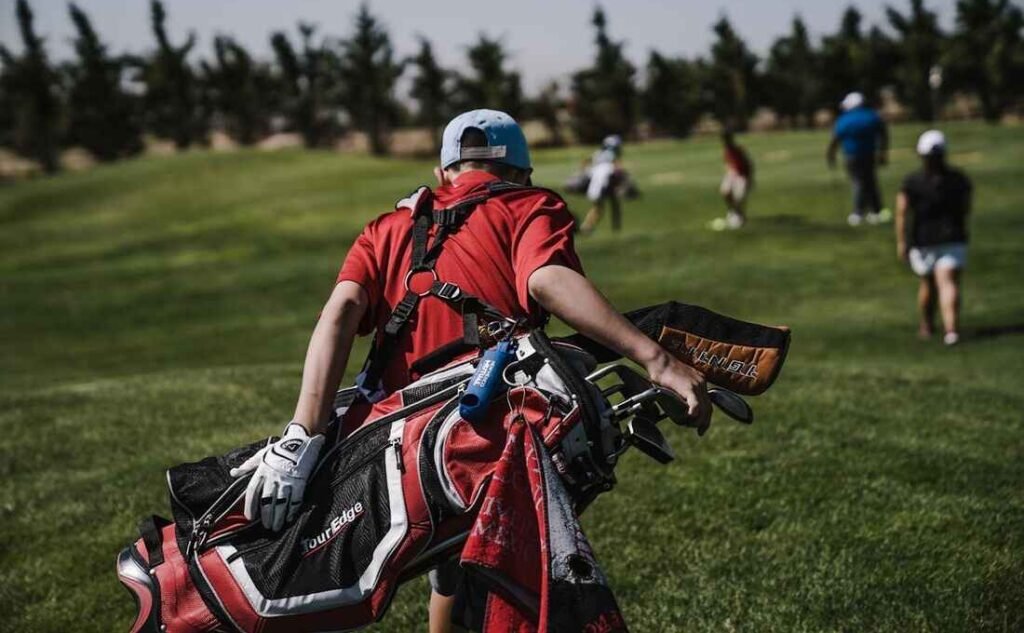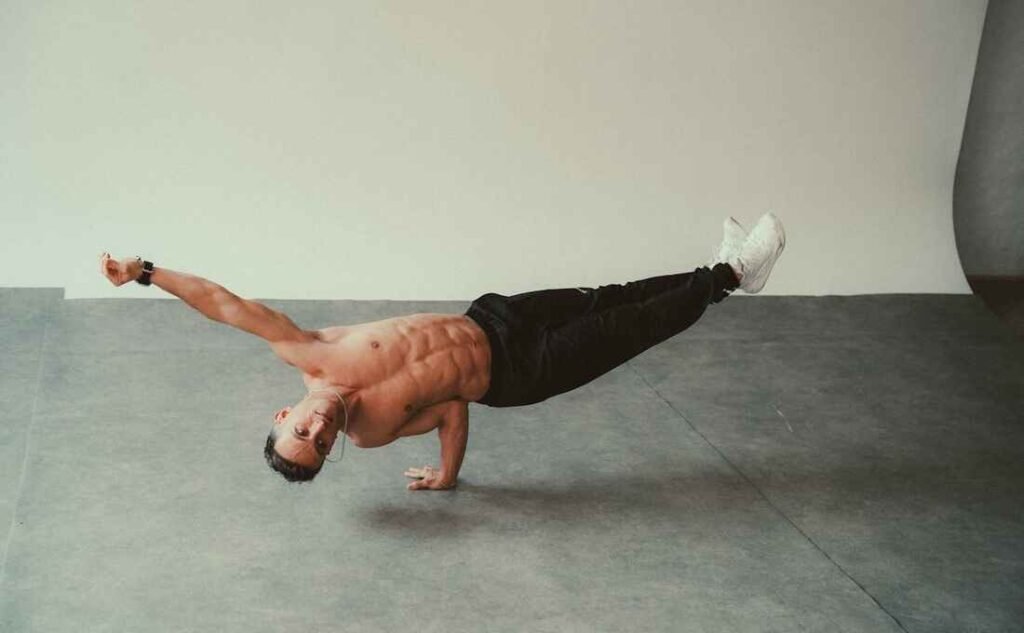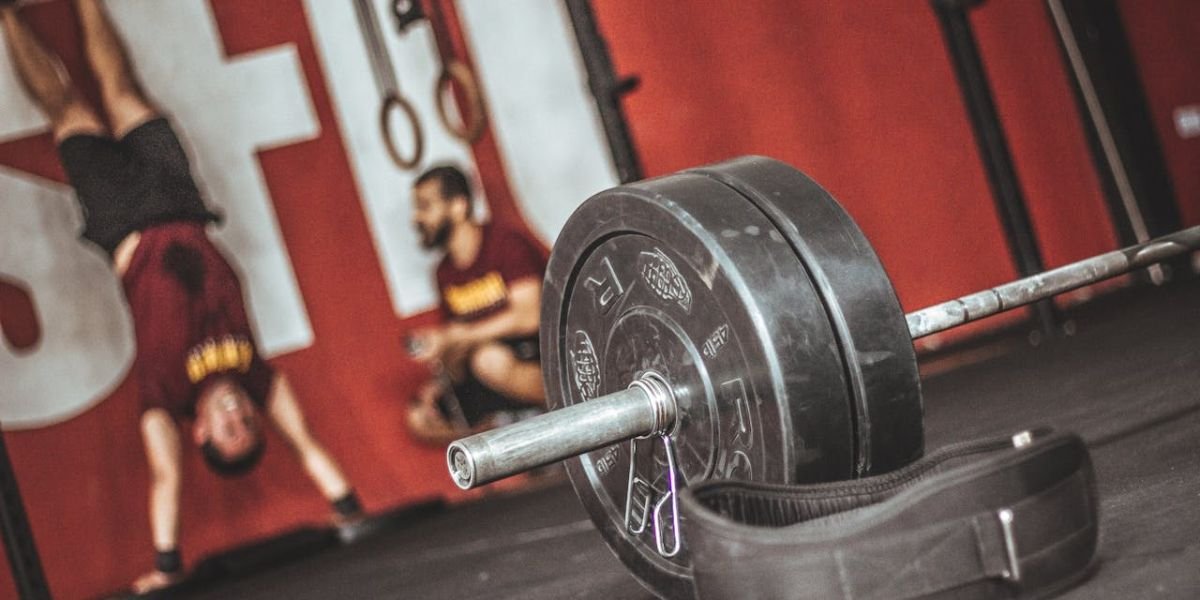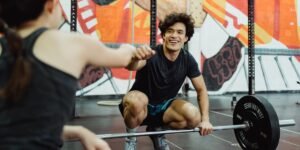Fitness isn’t just about running more, lifting heavier, or hitting a certain weight.
It’s about capability, having the strength, endurance, and resilience to take on whatever life throws at you, from multi-day hikes to playing with your dog to pushing through a tough workout.
In this article, we’ll break down what real fitness actually means.
We’ll explore key research, unpack CrossFit’s training models, and explain why being truly fit goes far beyond just cardio or strength.
Table of Contents
What is fitness, and what is being fit?

“Fitness”:
Real fitness generally means the ability to perform physical tasks. We will go over it all in much more detail below, but it’s all about what you can do.
It is the work you do, in what you train or practice, to achieve improvements in the 10 Components of Real Fitness, such as Cardiovascular endurance, Stamina, Strength, Flexibility, Power, Speed, Coordination, Agility, Balance and Accuracy (see more on each one below).
Being “fit”:
Being fit is the result of that training, from any one of the 10 components, it’s your current level of physical readiness, as you can’t be “fit” without any type of fitness.
How fit you think you are is subjective to what you need vs what you can or want to do. While there are baseline tests you can do (like these), you ultimately decide if you’re “fit enough” for what you want to do.
The 10 Components of Real Fitness

These are the 10 main components that make up any real fitness, which are commonly used in CrossFit but are also largely recognised by exercise physiologists.
- Cardiovascular endurance – How well your heart and lungs fuel your body.
- Stamina – How long your muscles can keep going.
- Strength – How much force you can produce.
- Flexibility – Your range of motion.
- Power – How fast you can apply strength.
- Speed – How quickly you can move.
- Coordination – How well you control movement.
- Agility – How fast you can change direction.
- Balance – Staying stable and controlled.
- Accuracy – How precisely you can move.
Most people only train two or three of these tops, but to achieve real fitness means building all of them.
You don’t have to be elite at everything, but if you’re ignoring half the list, you might not be as fit as you think and could be leaving fitness gains on the table.
(Source)
Why Use CrossFit’s Definition of Fitness?

CrossFit defines fitness as:
“Work capacity across broad time and modal domains.” (Source)
In simple terms, that means:
Fitness is your ability to handle any physical task, at any time, for any length of time, not just in one movement or skill, but across the board.
That’s a lot more useful than basic academic phrases like:
“The ability to perform daily tasks with optimal performance.” (Source)
Or like ones I have used in the past, fitness means: “the condition of being physically strong and healthy” (Cambridge Dictionary).
And while these definitions have their place, by simplifying them down to the base, today we are going deeper into what it really means, so we need a deeper meaning.
CrossFit standards
CrossFit has more than theory, it has proof. The athletes it produces are living examples of what real fitness looks like.
They had to define fitness clearly enough to build a sport around it, and the success of that sport is more proof that they’re onto something.
But it’s not just about the definition. CrossFit also created a three-part framework to explain, test, and train fitness across all areas.
CrossFit’s three fitness standards that are worth knowing:
- The list of 10 general physical skills (listed above as the 10 components of real fitness). Which is used to test and is the basis of their training for all physical adaptations.
- Being prepared for the unknown, through constantly varying your training. Not to be random, but to stay adaptable for every task imaginable. Thorough, varied training routines and a wide range of exercises. Also called the “Hopper model”, so basically being able to do any task chosen randomly.
- A focus on training the three energy systems your body uses for all activity: Phosphagen, Glycolytic, and Oxidative (think in time; 10 secs or less, ~60 secs, then ~130 secs or more). This is the metabolic conditioning or “cardio” that they train for.
You don’t need to follow CrossFit, but their framework shows what complete fitness looks like.
They have a structure that works, and they get results; that’s why their definition and training techniques work so well and are arguably the most effective for improving overall fitness.
You can read more about their technique and approach from CrossFit Journal – “What is Fitness?”.
Fitness Builds Health

CrossFit explains health and fitness as a continuum:
Sickness → Wellness → Fitness.
(You can find a great explanation of this in the video here.)
Basically, the fitter you are, the better your body handles illness, injury, and life’s challenges.
Fitness acts like a buffer when you’re fit; even if you get your training held up or you get an illness, you have to pass through the “wellness” stage before hitting “sickness.”
That gives you more margin, more resilience, and a better chance to recover quickly.
This shows how fitness isn’t just about performance, it’s about long-term physical and mental resilience, which will greatly affect your health over the years.
Research backs this up: strength, endurance, and other fitness markers are strongly linked to lower disease risk and longer lifespan. (Source)
Engaging in a fitness routine and physical activity can even reduce depressive symptoms. (Source)
What To Do With This

Now that you understand what real fitness is, it’s time to train smarter, not just harder.
You don’t need to do CrossFit to build this kind of fitness, but you do need a system that develops your capacity across multiple domains.
Here’s how:
- Start training more than one. Strength and cardio are only some of the pieces of the puzzle. Use the 10 components of fitness to find your weakest links and focus on them first.
- Rotate your training focus. Rotate your main focus regularly so you develop balanced capabilities. Treat all strength, stamina, speed, and skills as equal.
- Test and track your progress. Use varied challenges that stress different parts of your fitness. This isn’t guesswork; tracking is how you know you’re truly improving.
- Hold off on specialisation. Build general physical preparedness and broad work capacity before zeroing in on specific skills.
- Set clear, actionable goals. As I covered in my last post on goal setting, having the right fitness goal for you is one of the most important ways to set yourself up for success.
- Make a plan. We cover just that in, how to train for lifelong fitness, where you’ll learn how to build your own sustainable routine using the 10 components.
This approach reflects what’s happening in most modern training, like HYROX and hybrid athlete programs focused on building adaptability and broad fitness to perform well in any physical challenge.
Summary
Real fitness isn’t just one thing, and certainly isn’t only about how you look. It’s about what you can do, keep doing and what you’re capable of.
It’s a combination of many physical skills and health markers that together define how capable, resilient and ultimately how fit your body is.
If your goal is real, lasting fitness, not just to get stronger or faster in one area, then start building a balanced work capacity. Train across different movements, stress your energy systems, and track your progress.
If you’re serious about results, set a higher standard. Train like it’s for life, because it is.
Want to learn how to apply this to your life and make it long-term? Read the guide on Lifelong Fitness.
You’ve just seen how CrossFitters build serious fitness and why they might be the ultimate hybrid athletes. There’s no reason you can’t do the same.
Just remember:
You don’t get fit from training. You get fit from adapting to it, and that means backing it up with proper recovery, nutrition, and consistency.
Have any questions or suggestions? Feel free to contact us here.
References:
- Mayo Clinic. Fitness. Mayo Clinic. Available at: https://www.mayoclinic.org/healthy-lifestyle/fitness/in-depth/fitness/art-20046433
- CrossFit. What Is Fitness: The 10 Physical Skills. CrossFit. Available at: https://www.crossfit.com/essentials/what-is-fitness-lecture-10-physical-skills
- CrossFit. What Is Fitness? Part 6 – The Definition. CrossFit. Available at: https://www.crossfit.com/essentials/what-is-fitness-part-6-definition
- Khan, K.M., et al. Fitness. In: Encyclopedia of Sports Medicine and Science. Springer. Available at: https://link.springer.com/referenceworkentry/10.1007/978-1-4419-1005-9_1167
- Cambridge University Press. Fitness. Cambridge Dictionary. Available at: https://dictionary.cambridge.org/us/dictionary/english/fitness
- Glassman, G. What Is Fitness? CrossFit Journal. Available at: https://journal.crossfit.com/article/what-is-fitness
- CrossFit. Sickness-Wellness-Fitness Continuum. CrossFit. Available at: https://www.crossfit.com/essentials/what-is-fitness-part-4-sickness-wellness-fitness-continuum
- Wang, Y., et al. The Role of Physical Fitness in the Prevention of Chronic Diseases. Journal of Sport and Health Science. 2022. Available at: https://www.sciencedirect.com/science/article/pii/S209525462200103X
- Schuch, F.B., et al. Physical Activity and Incident Depression. Neuroscience & Biobehavioral Reviews. 2020. Available at: https://www.sciencedirect.com/science/article/abs/pii/S0149763419305640
- HYROX. The Fitness Race. Available at: https://hyrox.com/the-fitness-race/
- Pioneer Gains. How to Find the Right Fitness Goals. PioneerGains.com. Available at: https://pioneergains.com/how-to-find-the-right-fitness-goals
- Pioneer Gains. What Is Lifelong Fitness? The Essentials. PioneerGains.com. Available at: https://pioneergains.com/what-is-lifelong-fitness-the-essentials




